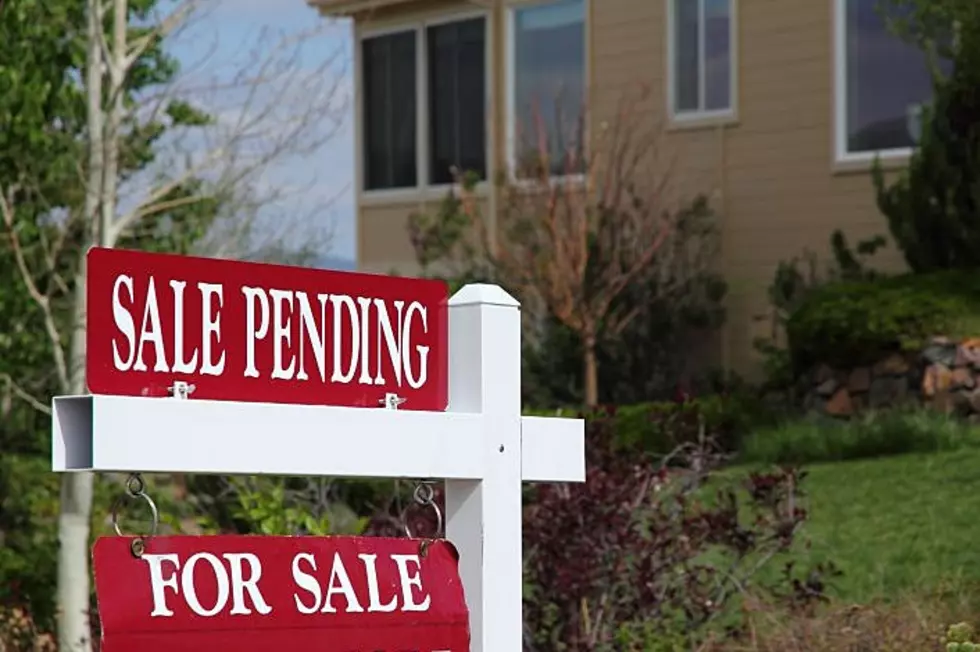
Layoffs feared in southern Nevada as new home sales plummet in July
Dana Gentry/Nevada Current
Builders in Southern Nevada sold 434 homes in July, down from 713 the previous month, according to analyst Home Builders Research, sparking concerns about rippling economic effects.
Sales of new homes in the valley peaked this year at 1,256 in March.
“I’ve heard of one builder making some layoffs but I don’t know any details so I’d imagine with permit activity also falling there will be some residual effects across the industry,” Andrew Smith president of Home Builders Research, said in an interview.
“We are busy for the next two weeks, still catching up from supply chain and labor issues,” says Patricia Farley, owner and president of Southwest Specialties. “After that you will see massive layoffs.”
Farley says one competitor has already laid off 150 workers.
“I do anticipate home builders to slow down current construction as well as their pipeline for next year in anticipation of an expected recession in 2023,” says Dr. Vivek Sah, director of UNLV’s Lied Center for Real Estate.
“Interest rates increased the highest percentage jump in the shortest amount of time in history,” the Southern Nevada Home Builders Association said in a statement. “That shocked home sales and some buyers canceled because they were priced out of the new rates.”
“I know people who qualified last year for a new home, which is a one-year build out, but can’t qualify this year with the higher interest rates,” says Sarah Scattini, president of the Reno/Sparks Association of Realtors. Builders must either shave the price or cancel the sale and start over, she says.
Redfin reports nationally some 60,000 home-purchase agreements, new and resale, fell through in June, equal to about 15% of homes that went under contract that month. That’s the highest cancellation rate since the pandemic began.
Scattini expects home builders, who she says shunned sales agents when new homes were selling like hotcakes a year ago, will be clamoring for their help in the coming months.
The Reno/Sparks market saw 425 existing homes change hands last month, down 34% from last year and down 7% from June.
The median price of an existing home slipped 4.2% from June to $574,510. That’s up 9.4% from last year. Homes in Reno/Sparks were on the market 25 days on average before going into contract, up 316% from 6 days in July 2021.
The median price of a resale home in Southern Nevada dropped to $465,000 in July, down 3.1% from June, but up almost 15% from $405,000 a year ago, according to Las Vegas Realtors. The median price peaked in May at $482,000.
LVR reports 2,672 resales in July, down 38.4% from a year ago for homes and 30.6% for condos and townhomes.
The association reports 7,331 single family homes for sale in July had no offers. That’s up 144% from a year ago, when homes were reaping multiple offers above listing price within days of hitting the market. The number of condos and townhomes without offers in July (1,618) was up 144% from a year ago.
Still, prices remain out of reach for many buyers.
Las Vegas Realtor Aldo Martinez says a prospective buyer in Las Vegas “would have to be making $125,000 a year in order to qualify for a home. That’s only 193,000 households out of the 850,000 in Clark County.”
“It’s pretty easy to connect the dots between higher interest rates and reduced demand, which is going to suppress prices,” says fiscal analyst Guy Hobbs of Hobbs, Ong, and Associates. “Suppressed prices are probably a strong signal to the homebuilders. If they’re thinking about undertaking another project, the way their margins are anyway, doing it in a market where the prices are dropping is probably not to their advantage.”
At a July auction, builders made no offer on eight of 20 tracts of land belonging to the Clark County Department of Aviation.
“The per acre price for what these are zoned for was too high for builders to secure financing,” the SNHBA said of the parcels, which are generally acquired by the county to ensure land uses are compatible with the airport.
Hobbs says supply chain issues and building material prices could further compromise margins for builders.
The National Association of Home Builders reports in the past year, prices for residential construction materials have increased by almost 20%.
Farley doesn’t expect commercial projects to offset the anticipated lull in the residential market.
“Commercial construction is on a drip now and companies are struggling with having the financials necessary for bonding on big projects,” she says.
Jobs never recovered
In 2006 more than 146,000 Nevadans held jobs in construction.
“We never got all those jobs back,” Hobbs says, adding by comparison, today’s construction labor force lacks depth, especially in specialty positions. Nevada currently has about 93,000 construction jobs.
The Southern Nevada Building Trades did not respond to requests for comment on the union’s outlook.
“It all depends on how the interest rates go for the rest of the year,” says Scattini, who says she’s been briefed by experts to anticipate a recession early next year.
Farley is equally pessimistic about a quick recovery, citing inflation concerns.
“I don’t think the market will turn quickly,” she says. “I think it’s ugly through year-end.”
